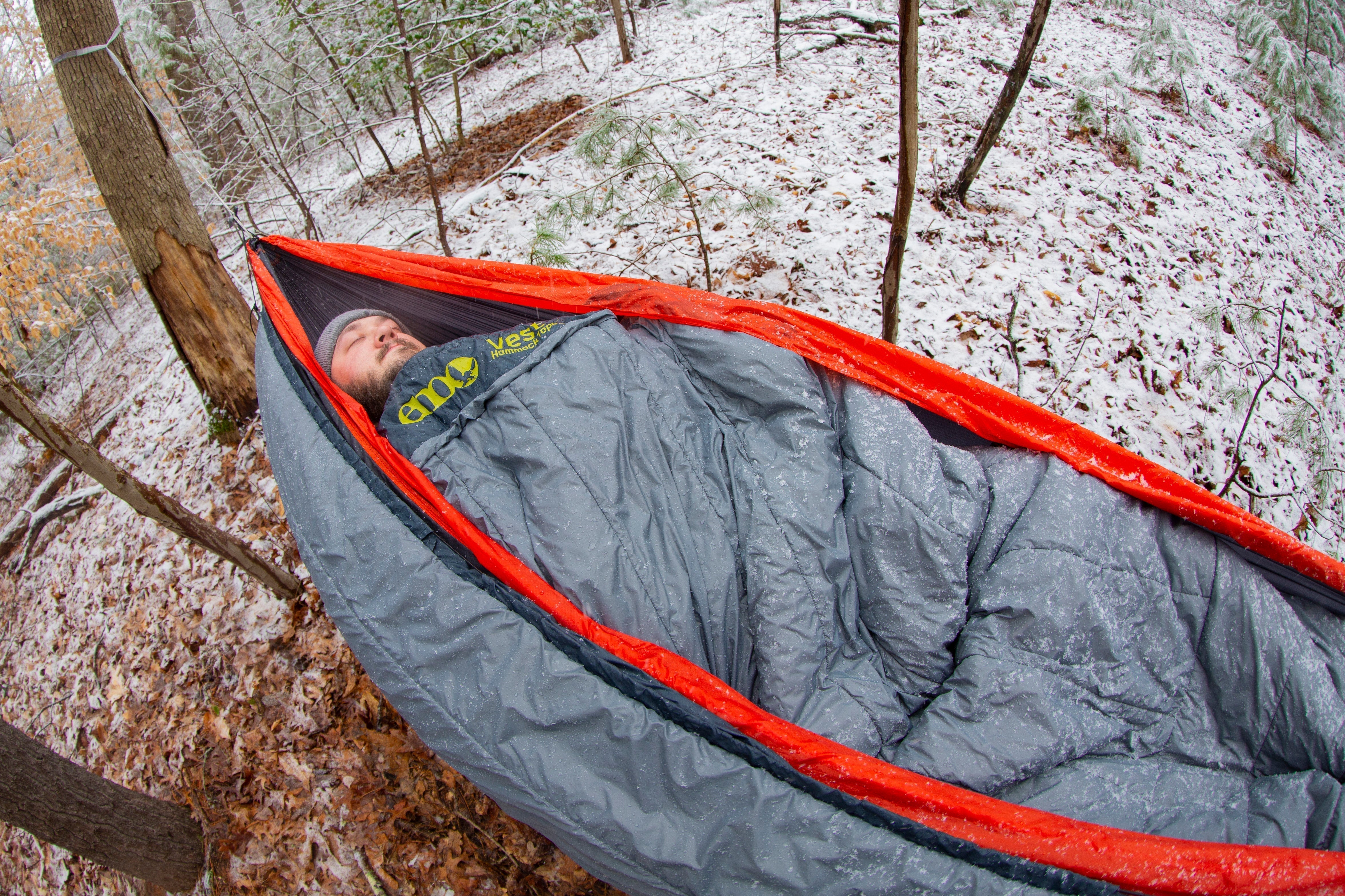Written by Justin Fricke aka JustinTheWeekendWarrior
Alright, so some of my friends out west have already started getting snow, and that’s crazy to this Floridian. Did we skip fall and go straight to winter this year? It’s undoubtedly getting cold, and that’s when the weather people on T.V. start telling us to bundle up and stay inside (which is an oxymoron if you ask me). But what’s one to do when the temperatures drop and the passion for the outdoors is still burning inside? More often than not, you’re going to get outside no matter what, and sometimes that involves camping.
If done “right”, you should stay nice and warm. If you miss just one thing, you could spend an entire night shivering and wishing you had taken the time to keep reading (wink, wink). Here’s a few tips and tricks to make sure you stay warm sleeping under the stars on frigid nights.
- Layer up: There’s nothing wrong with wearing more clothes to bed. The more layers you have on, the warmer you’ll be. It also makes getting up a little bit easier in the morning when you don’t have to worry about freezing your toosh off when you crawl out of your hammock/sleeping bag.
- Have the right equipment: Whether you choose to hammock camp or tent camp, you need to be prepared. If you’re hammock camping, you should be using a top quilt like the Vesta TopQuilt and an under quilt, such as the Vulcan UnderQuilt, to stay warm instead of using a sleeping bag. A sleeping pad underneath would also help, and you can make sure it’s secured into place using something like the Hot Spot. If tent camping is more your style, you need to make sure you have the proper tent for the climate (3-season or 4-season if it’s winter), sleeping bag rated for the temperatures you’ll be sleeping in, and a sleeping pad, which is used more for warmth than comfort.
- Camp below the tree line: For those who don’t know, the tree line is basically where trees and most vegetation stop growing. The tree line can vary anywhere from 2,000 feet in elevation all the way up to 17,000 feet in elevation, depending on where you are in the world and on the trees that are indigenous to that area. Basically, this is where a lot of vegetation stops growing due to lack of oxygen or moisture, extreme living conditions, etc. Camping below the tree line offers some protection from the elements and quicker access to survival essentials if something goes wrong. If you choose to camp above the tree line, you’re pretty much saying you think you’re more hardcore than mother nature and more than likely, she’ll spank you.
- Sleep with something warm: One of my friends just got back from a pack rafting trip in Alaska. She said she froze the first couple nights and was fed up with shivering in her sleep. Before she crawled into her sleeping bag, she started boiling a few cups of water and dumping it into her Nalgene and then put that in her sleeping bag. She claims it warmed her right up, while her friend claims the emergency space blanket (yes the thin shiny thing that reflects body heat) kept her warm all night.
These are just a few tricks I’ve learned over the years and have heard others use to keep warm sleeping under the stars during the frigid fall and winter nights. I’m sure there are plenty of other tips and tricks to add to the list.
What are some of your tips and tricks to staying warm when you sleep outside?





Share:
Fire Building 101
Shelter: Tarps, Bivys, Tents, and Hammocks